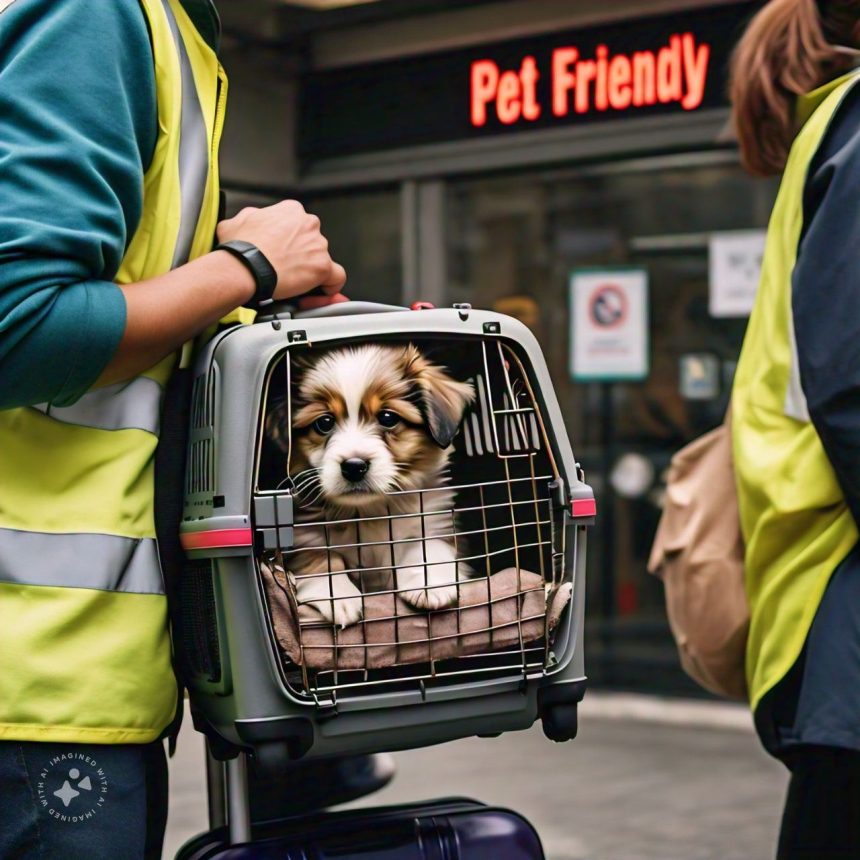As a responsible pet owner, ensuring your furry friend’s safety during travel is paramount. Whether you’re embarking on a cross-country move or simply taking your pet to the vet, proper transport techniques are essential. Navigating the complexities of pet transportation can be daunting, but with the right knowledge and preparation, you can make the journey smooth and stress-free for both you and your animal companion. In this article, you’ll discover expert tips and best practices for safely transporting your pets, covering everything from choosing the right carrier to managing your pet’s anxiety during travel. By following these guidelines, you’ll be well-equipped to prioritize your pet’s comfort and security on any journey.
Choosing the Right Pet Carrier
When it comes to pet transportation your furry friend, selecting the appropriate carrier is crucial. The right size ensures your pet’s comfort and safety during travel. A carrier should be large enough for your pet to stand, turn around, and lie down comfortably. However, avoid oversized carriers as they may not provide adequate security during sudden movements. Pet carriers come in various materials, each with its own benefits. Hard-sided carriers offer superior protection and are ideal for air travel or long journeys. Soft-sided carriers provide flexibility and are often more comfortable for your pet. Whichever you choose, ensure it’s made of durable, easy-to-clean materials that can withstand your pet’s claws and potential accidents.
Proper airflow is essential for your pet’s well-being during transport. Look for carriers with multiple ventilation openings to ensure adequate air circulation. Additionally, carriers with mesh panels or windows allow your pet to see their surroundings, which can help reduce anxiety. However, balance visibility with security to prevent your pet from becoming overstimulated.
Preparing Your Pet For the Trip
1. Familiarize Your Pet with the Carrier
Before embarking on your journey, it’s crucial to acclimate your pet to their travel carrier. Start by placing the carrier in a familiar area of your home, leaving it open and accessible. Encourage your pet to explore it by placing treats, toys, or a favorite blanket inside. This positive association will help reduce anxiety during travel.
2. Practice Short Car Rides
To prepare your pet for longer journeys, begin with short car rides around the neighborhood. Gradually increase the duration of these trips, rewarding your pet with treats and praise for calm behavior. This step-by-step approach helps your pet become more comfortable with vehicular motion and unfamiliar environments.
3. Maintain Regular Routines
In the days leading up to your trip, stick to your pet’s normal feeding and exercise schedules as much as possible. Consistency in routine helps minimize stress and anxiety associated with travel. However, on the day of departure, consider feeding your pet a light meal a few hours before the journey to prevent motion sickness.
4. Pack Essential Items
Prepare a travel kit for your pet, including:
- Sufficient food and water for the duration of the trip
- Collapsible bowls for easy feeding and hydration
- Favorite toys or comfort items
- Waste bags or a portable litter box
- Any necessary medications or health records
Having these items readily available will ensure your pet’s comfort and well-being throughout the journey.
5. Consider Anxiety-Reducing Techniques
For pets prone to travel anxiety, consult your veterinarian about potential calming aids. These may include pheromone sprays, anxiety wraps, or in some cases, mild sedatives. Always test any new products or medications before your trip to gauge their effectiveness and any potential side effects.
Keeping Your Pet Safe and Comfortable
· Secure Containment
When it comes to pet transportation, safety should be your top priority. Always use a sturdy, well-ventilated carrier or crate that’s appropriately sized for your pet. This not only prevents your furry friend from roaming freely in the vehicle but also protects them in case of sudden stops or accidents. For larger dogs, consider using a safety harness that attaches to the car’s seat belt system. Remember, a secure pet is a safe pet.
· Climate Control
Maintaining a comfortable temperature is crucial for your pet’s well-being during pet transportation. In warm weather, never leave your pet in a parked car, as temperatures can quickly rise to dangerous levels. Use air conditioning to keep the vehicle cool, and provide fresh water for your pet to stay hydrated. In colder months, ensure the car is warm before placing your pet inside, and consider using a pet-safe blanket for added comfort.
· Familiar Comforts
To help ease your pet’s anxiety during travel, include some familiar items in their carrier. A favorite toy, blanket, or even an article of clothing with your scent can provide comfort and reassurance. These familiar objects can help create a sense of security in an unfamiliar environment, making the journey less stressful for your pet.
· Regular Breaks
For longer trips, plan frequent stops to allow your pet to stretch, relieve themselves, and drink water. This is especially important for dogs, who may need short walks to burn off energy. However, always keep your pet on a leash during these breaks to ensure their safety in unfamiliar surroundings. Remember, a comfortable pet is more likely to be a calm traveler, making the journey smoother for everyone involved.
Conclusion
As a responsible pet owner, ensuring your furry friend’s safety during transport is paramount. By following these essential tips, you can significantly reduce stress and risks for both you and your pet. Remember to secure your pet properly, plan frequent breaks, and never leave them unattended in a vehicle. Familiarize yourself with airline and destination requirements well in advance of travel. With careful preparation and the right equipment, you can make any journey with your pet a positive experience. Whether it’s a short car ride or a long-distance move, prioritizing your pet’s comfort and security will lead to smoother, safer travels for everyone involved.
For more details click here on taggingrobot.com.


Leave a Reply